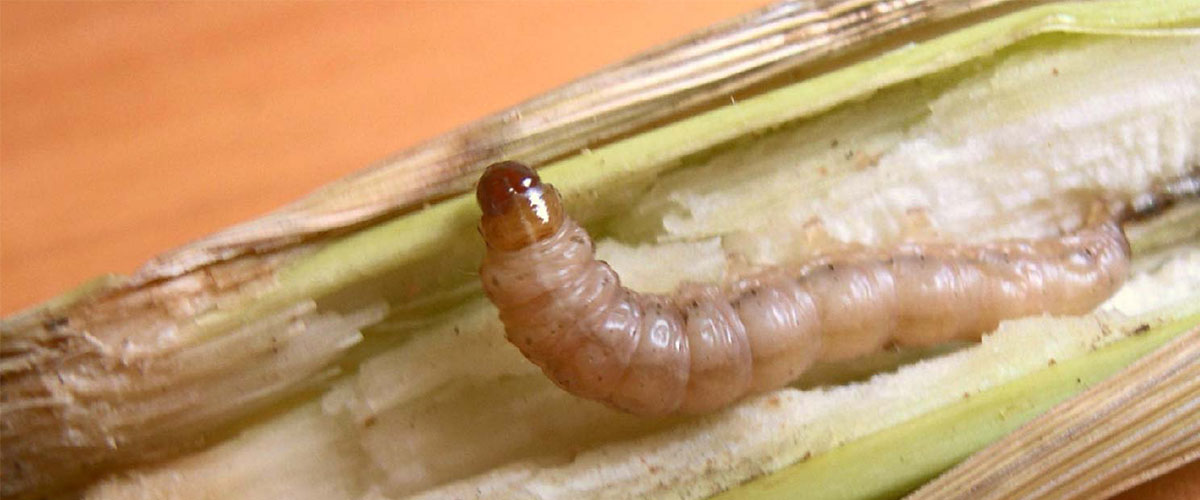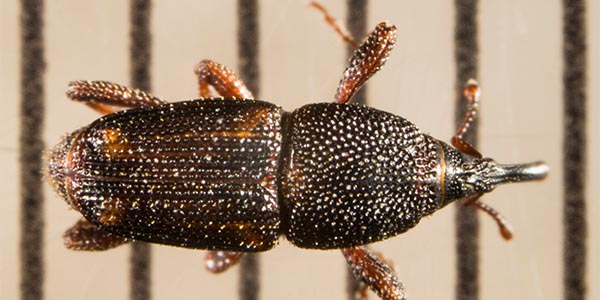Pests & Disease Control

Field Pests
- Stem borers and Armyworms
Common insect pests of maize are stem borers and armyworms. Stem borer damage the stalks while armyworms damage the leaves
Control
- Use insecticides like actellic dust and dimethrate
- They don’t easily respond to chemical treatment since they barrow into stems and are protected from pesticide attack
- Striga weed
A parasitic weed and common in soils that have been cultivated over long periods. Seeds can stay dormant in the soils for over fifteen years
Control
- Use of crops that stimulate germination of Striga weeds but does not support it like legumes, especially groundnuts.
- Maintain high soil nitrogen and phosphorous levels
- IR maize
Storage Pests
Maize weevils and Larger Grain borer
| Pests | ||
| Category | Field Pests | |
| Pests | Description | Control |
| Army worms | 1. Fully grown worms are velvet black with fine yellow lines and are about 35cm long
2. Feed heavily on leaves leaving only stems and midribs |
1. Spray with organophosphates insecticides like dimethoate |
| Maize stem borers | 1. Are most destructive at the larva stage
2. Creamy white with a grey or pink tint barrow into stems and grow up to 40mm |
1. pull push method |
| Cutworms | 1. Fully grown worms look greasy and greyish in colour. They grow up to 40 mm length and tend to curl into a C shape when disturbed.
2. They eat maize plants soon after germination |
1. Leave fields weed free for about 6 weeks before planting
2. Apply pyrethroid sprays |
| Leaf hoppers | 1. Leaf hoppers are small, pale, yellow and wedge-shaped insects
2. They suck sap from maize plants and are important vectors of the maize streak virus |
1. Plant maize streak virus resistant varieties |
| Termites | 1. Their attack is prominent during drought seasons and areas with erratic rainfall | 1. Spray with dusban, terminator, pyrinex, troban, endosulfan, malataf (20-40 mls in 15 litres of water per anti-hill) |
| Maize weevil | 1. Tunnel through grains | 1. Storage sanitation
2. Ensure cleanliness of new stock 3. Dry to less than 10% moisture content |
| Larger Grain Borer | 1. Bore into grains | 1. Storage sanitation
2. Ensure cleanliness of new stock 3. Dry to less than 10% moisture content |
Maize Diseases
Diseases of maize include
- Maize streak virus
A viral disease transmitted by the leaf hopper
Symptoms
Small white tending to yellow lesions which coalesce to form wider strips
Control
- Regular scouting to establish the leaf hopper populations and use of appropriate insecticide
- Early planting
- Leaf Rust
Caused by a fungi Puccinia sorhgi. Alternate hosts include Oxalis latifolia. Spread is favoured by warm, humid weather conditions
Symptoms
Oval to elongated golden brown to reddish brown spores (postules) later turning brownish black ending with severe chlorosis and death of leaves
Control
- Apply foliar fungicides at on-set of symptoms
- Using resistant varieties
- Control alternate hosts
- Common Smut
A fungal infection that affects the ears, stalks, leaves and tassel. This is most severe inn young and actively growing plants and may stunt and kill them
| Maize diseases | ||
| Diseases | Description | Control |
| Maize smut | 1. Cause by a pathogenic fungus
2. Most conspicuous symptoms include abnormal development of tassels and black masses of spores |
1.Plant resistant varieties |
| Maize streak virus | 1. Stunted growth
2. Chlorosis with broken yellow streak along the veins |
1. Plant resistant varieties |
| Gray leaf spot | 1. Pronounce lesions leading to leaf senescence | 1. Plant resistant varieties Longe 2H, 5H & 10H |
| Turcicum leaf blight | 1. Slightly oval, water-soaked, small spots produced on leaves
2. Spots escalate into severe burns all over the plant |
1. Plant resistant varieties Longe 2H, 5H & 10H
2. Crop rotation 3. Spray with fungicides |
| Ear rot | 1. Common in hot, humid maize growing areas | 1. Plant resistant varieties Longe 2H, 5H & 10H
|



